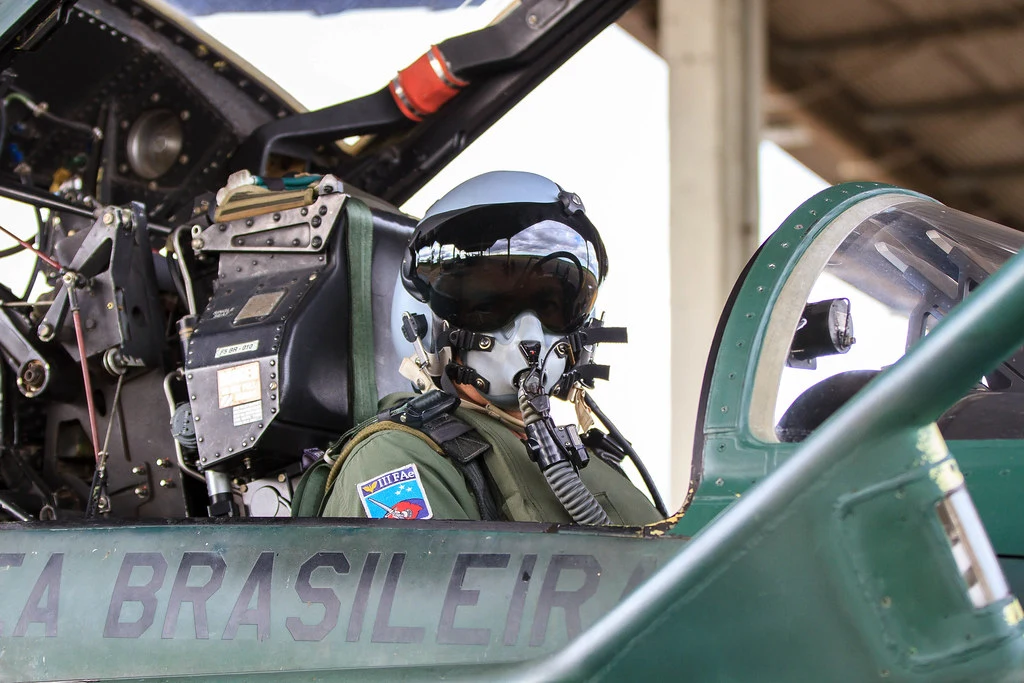Battling escalating costs linked to the Gripen program, the Brazilian Air Force (FAB) is contemplating the procurement of used American F-16 aircraft, a move seen as an interim defense solution. This tactical pivot, affirmed by FAB officials, has ignited a fervent discussion in military discussions across the nation.
FAB officials have clarified that this contemplation in no way relates to the operational capabilities of the Gripen. FAB is currently in the phase of data collection, with neither the quantities nor the types of aircraft defined as yet, laying emphasis on the fact that negotiations with other governments or companies have not been initiated. However, this investigative pursuit does confront the foundational philosophy behind the Gripen program.
Financial apprehensions partnered with project timelines are the driving forces behind this consideration. Sources within President Lula’s government speculate this move as a strategic means to apply pressure on Sweden for more favorable terms in future Gripen acquisitions. In September, the Brazilian government proposed a barter trade deal with the Swedes, which involved Brazil’s state-owned aerospace conglomerate, Embraer’s KC-390 cargo planes.
The original deal with Saab for the Gripen aircraft had cost Brazil a whopping 39.3 billion Swedish crowns, which adjusted to present-day valuation stands close to $4 billion. Although the Swedish government agreed to finance this amount over a span of 25 years, a stipulation requiring advance payments from FAB has compounded fiscal pressures on the Brazilian financial machinery.
The period from 2019 to 2023 saw payments amounting to R$7.7 billion ($1.45 billion), with R$1.2 billion expended in the last fiscal alone. Practical constraints related to the current production tempo have further rendered the agreed delivery schedule unattainable.
F-16, bolstered by its extensive availability in global stockpiles, holds the potential to serve as a feasible intermediate solution. Ukraine, amidst confrontations with Russia, had adopted this strategy. Even Argentina, under the leadership of President Javier Milei, procured 24 used F-16s from Denmark amounting to a modest $300 million, a fraction of the projected cost of 14 new Gripens.
While certain parameters may cast the F-16 as less capable, it adequately meets Brazil’s requirements. Brazil’s air defense currently leans heavily on a fleet of upgraded F-5s and AMX attack aircraft. These will eventually be phased out and replaced by the Gripen. However, with many of these units nearing their expiry, F-16s could plug the gap until the Gripens are operational.
The seven Gripens already delivered are in the missile testing phase, with their first operational deployment penned down for November. Brazil’s current deal with Sweden includes Iris-T and Meteor missile attachments. The Iris-T missile has the added advantage of being integrable on an F-16.
Although the Meteor missile mandates more expensive adaptations, F-16 acquisition would not hinder the Gripen program. If this provisional investigation leads to negotiations with the U.S., this could potentially tarnish Gripen’s reputation.
Moreover, with a surge in orders for American F-35s in Europe, the Gripen is already facing stiff competition. Brazil has signed on for 36 new-generation Gripen E/Fs so far. Saab claims that even as member nations are joining NATO, the Swedish behemoth has negotiated at least 60 aircraft deals.
In South America, both Chile and Venezuela deploy F-16s, with Argentina scheduled to join their ranks soon. Despite these shifting military dynamics, the spotlight remains on the speculated FAB’s approach: veering away from the Gripen and opening arms to the F-16 as a tactical stopgap solution for Brazil’s national defense.
